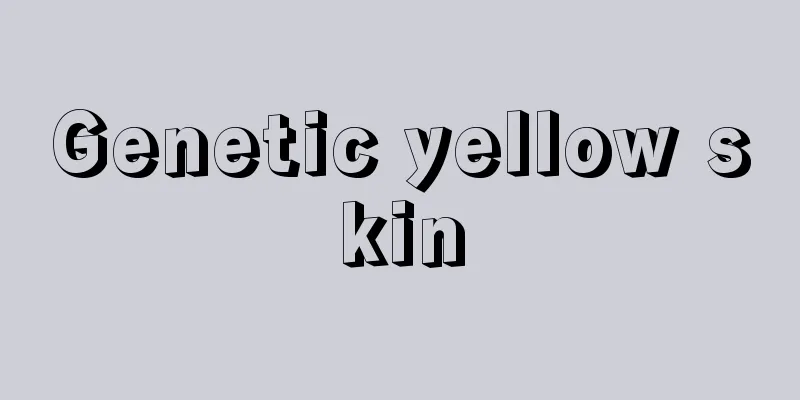Genetic yellow skin

|
Although we are all yellow people, our skin is not that yellow, just a little bit. Some people have jaundice after birth, so the skin on their body turns yellow. It can be cured slowly with recovery. For hereditary yellow skin, this situation still depends on the individual's pathological condition, because after all, everyone's physical condition is different. Symptoms and signs Hereditary skin diseases are caused by parents passing their abnormal or mutated genes to the next generation, causing the next generation to develop skin lesions specific to the gene at birth or later. There are very few non-hereditary congenital skin diseases, which are mainly diseases of the skin and its appendages caused by the interference of nutrition, viruses or microbial infections, or chemical and physical factors during the development of the fetus in the mother's body. ①The general characteristics of hereditary skin diseases are the same as those of hereditary diseases; ②It can be present at birth or appear in childhood or adolescence; ③The symptoms are not necessarily unique to this hereditary skin disease. For example, the blisters caused by friction are similar to those of congenital epidermolysis bullosa. ④ The same disease may manifest in different people with different symptoms. For example, mild ichthyosis may only cause slight changes in the limbs, while severe ichthyosis may affect the trunk and limbs, with prominent keratinization and dryness, and may also be accompanied by follicular keratinization and palmoplantar keratinization. ⑤ The same disease may have different inheritance patterns. For example, ichthyosis vulgaris is inherited in an autosomal dominant manner, while another type of the disease is inherited in a sex-linked recessive manner. Common hereditary skin diseases: There are more than a hundred known hereditary skin diseases, such as freckles, ichthyosis, albinism, etc. Medication Most of them have no effective treatment and cannot be eradicated. Some diseases can be improved through medication or diet therapy. For example, hereditary angioedema is caused by autosomal dominant C1 esterase inhibitor deficiency, which can be treated with kallikrein and the androgen-like drug danazol. Phenylketonuria can be prevented by restricting dietary phenylalanine intake. Acrodermatitis enteropathica can be controlled by zinc preparations. Some congenital enzyme defects or immunoglobulin deficiency can be treated by supplementing the missing substances. But these treatments do not remove the cause of the disease. When some congenital malformations or abnormalities affect function or beauty, surgical treatment can be adopted according to the specific circumstances. |
<<: Is broken palm hereditary?
Recommend
What to do if there is red blood in the nose
If there are red blood streaks in the nose for a ...
Is multinodular liver cancer serious?
Now, there is a relatively new drug microsphere, ...
How long can you live after recurrence of esophageal cancer after surgery
Esophageal cancer is a terrible disease. Once you...
How to adjust your baby’s sleeping time?
Babies are prone to poor sleep, and there are man...
What is a disposable diaper pad?
Because newborns' organs are not fully develo...
What are the examination steps for osteosarcoma
Osteosarcoma is a very painful thing for patients...
How to quickly relieve leg pain from mountain climbing
People who often engage in outdoor activities hav...
Can Laozao really make your breasts bigger and how to do it
Breast enhancement is a topic that many of us wom...
What is the most effective medicine for intestinal spasm
Intestinal spasm is also a relatively common dise...
Analysis of the treatment methods of laryngeal cancer: surgical treatment
Although there are many ways to treat laryngeal c...
Add a little of this to toothpaste and you won’t need to wash your teeth for the rest of your life. People with yellow teeth, please take a look
Rice, oil, salt, sauce, vinegar and tea are essen...
Is primary liver cancer contagious? Introduction to common knowledge about primary liver cancer
The clinical manifestations of primary liver canc...
How to quickly reduce swelling after a fall
When we do intense exercise, we often experience ...
Can patients with colorectal cancer do fitness?
Proper exercise can also speed up blood circulati...
Serum sialic acid is high
Serum sialic acid concentration can be used to di...









